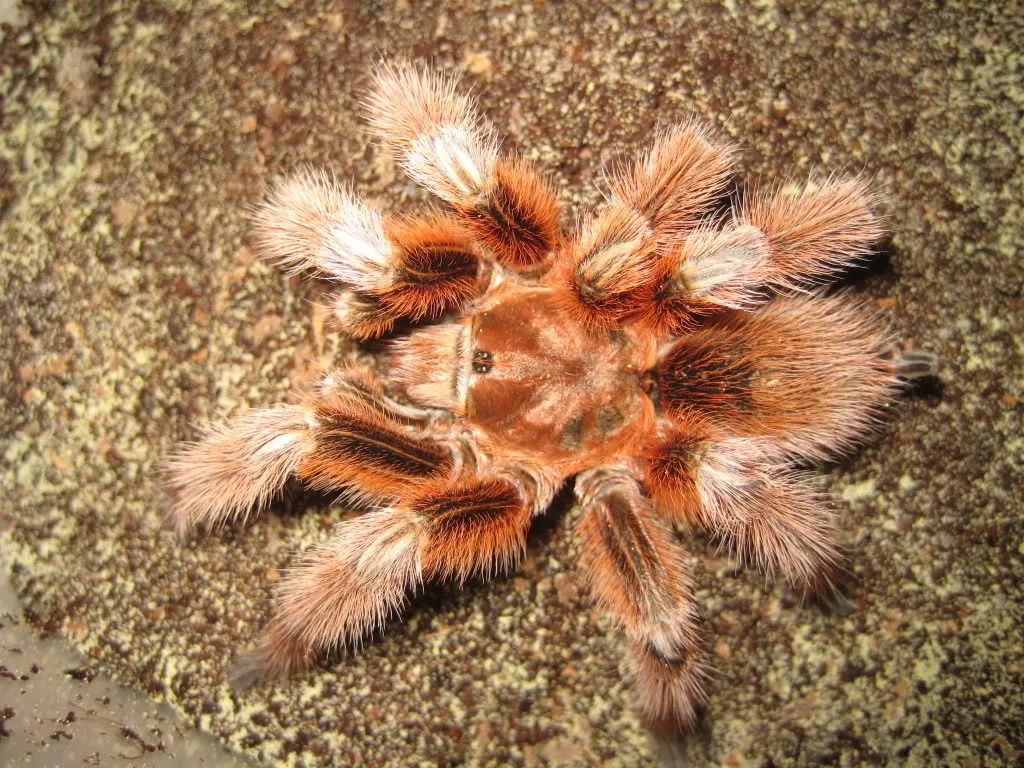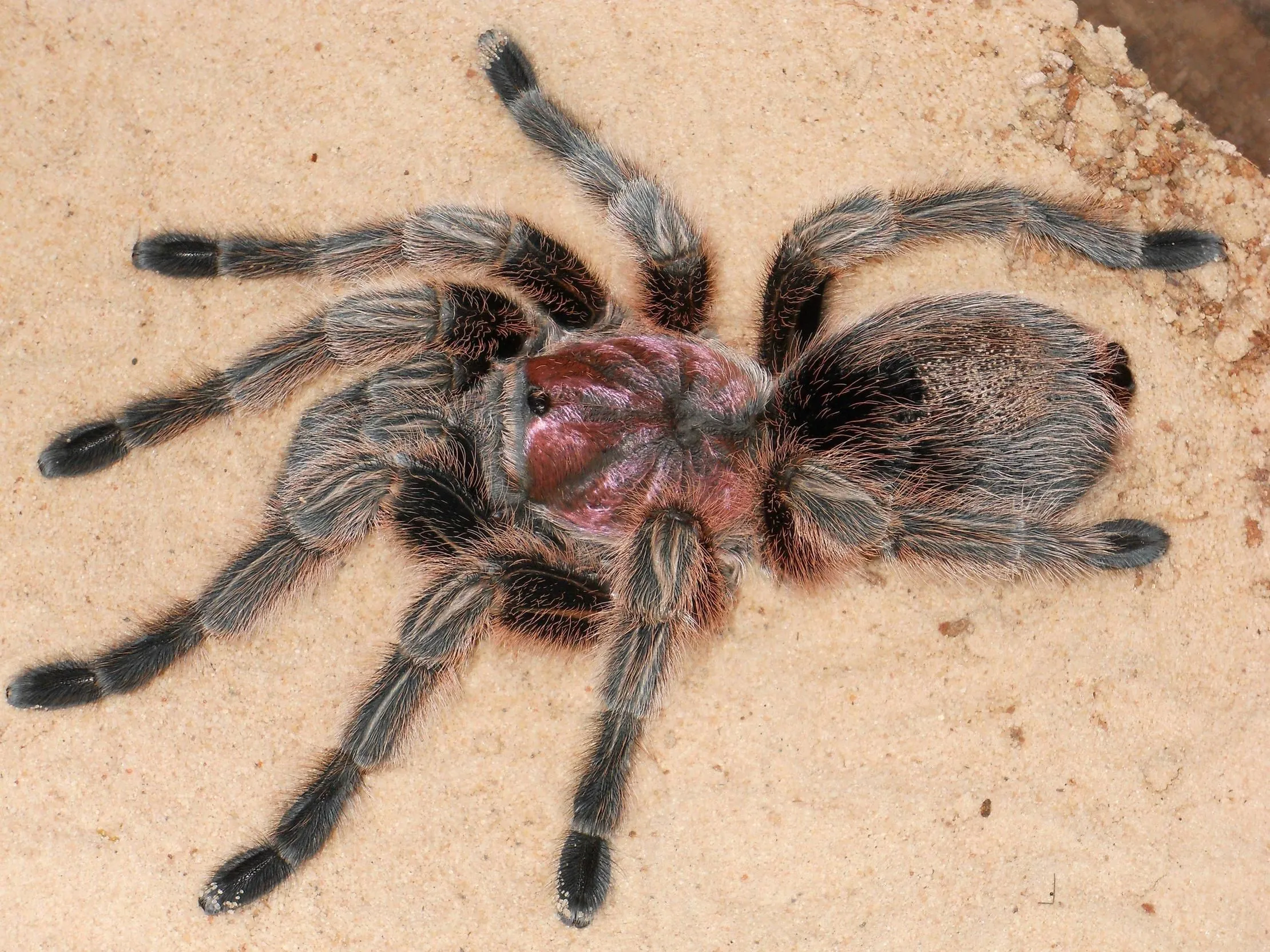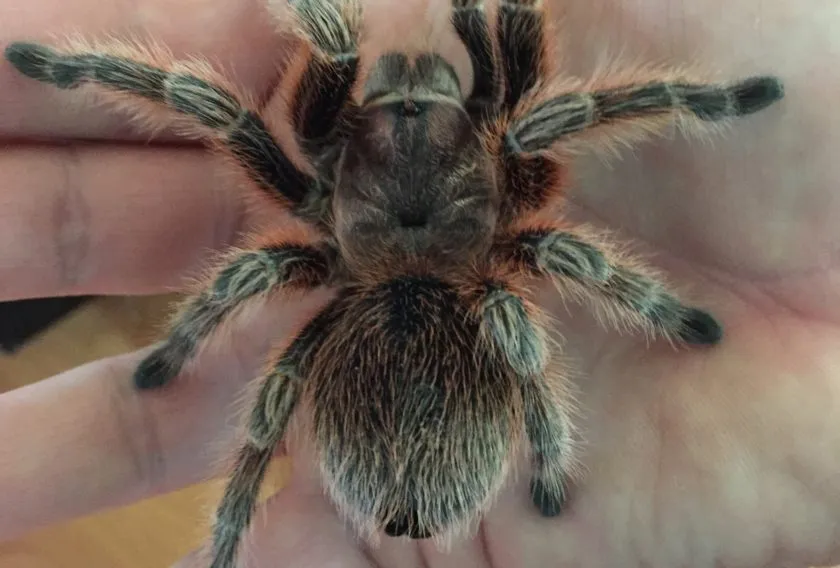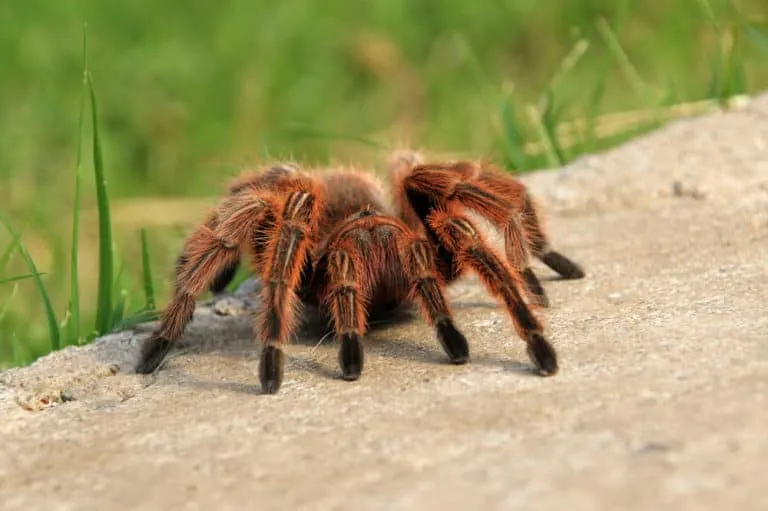Choosing Your Chilean Rose Tarantula
Bringing a Chilean Rose tarantula into your home can be a rewarding experience, but success starts with selecting a healthy specimen. This gentle species is popular among beginner tarantula enthusiasts. Taking the time to choose wisely will set the stage for a long and enjoyable companionship. Don’t rush the process, as the initial selection is crucial for your tarantula’s well-being. Look for a tarantula that displays active behaviors such as exploring its enclosure and moving about. This indicates vitality and good health. Additionally, the body of the tarantula should appear plump, not shriveled, suggesting it is well-hydrated and has been properly fed. Be patient and thorough; your choice will significantly impact the life and health of your new pet.
Selecting a Healthy Tarantula
When selecting a Chilean Rose Tarantula, the first thing to consider is its overall appearance. A healthy tarantula will have a robust body and should exhibit a good appetite. The legs should be intact, and the body should be free from any visible injuries or deformities. Avoid tarantulas that seem lethargic or show signs of distress, such as curled legs or an inability to move normally. Always observe the tarantula for a period of time before making a purchase, and ask the seller questions about its feeding schedule and molting history to gain insights into its health and care. Choosing a tarantula with a good posture and lively demeanor is a promising start, and it shows that the animal is likely receiving proper care and is in good health.
Inspecting for Activity and Health

Examine the tarantula’s movements. It should walk with all legs in a coordinated manner, and its movements should appear strong and purposeful. Pay attention to the abdomen, which should be a uniform color and free from any unusual discoloration. If possible, observe the tarantula eating; this is a strong indicator of a healthy appetite. A tarantula that is actively exploring its enclosure and responding to stimuli is generally a good sign. Conversely, a tarantula that is sluggish, spends most of its time in one place, or exhibits tremors may indicate a health problem. Inspecting the pedipalps and chelicerae for any damage is also important, as these are vital tools for eating and defense. Careful observation and a bit of research will give you the best chance of choosing a healthy Chilean Rose tarantula.
Creating the Ideal Habitat
Creating the right habitat is essential for the health and happiness of your Chilean Rose tarantula. This involves careful consideration of the enclosure, substrate, and environmental conditions such as temperature and humidity. The ideal setup provides a safe, comfortable, and stimulating environment where your tarantula can thrive. It is crucial to mimic the tarantula’s natural habitat as closely as possible to reduce stress and encourage natural behaviors. Proper housing ensures the tarantula’s physical well-being and supports its natural instincts, leading to a happier and healthier pet. A well-planned enclosure contributes significantly to the enjoyment of owning a Chilean Rose, allowing you to observe its interesting habits and behaviors while ensuring its longevity.
Enclosure Size and Type
The enclosure for your Chilean Rose tarantula should be appropriately sized to allow for comfortable movement without being too large, which can make it difficult for the tarantula to find its prey. A 5-10 gallon terrarium is typically suitable for an adult Chilean Rose. The enclosure should be well-ventilated, preferably with a screen top to allow for airflow and prevent escape. Glass or clear plastic enclosures work well because they allow for easy viewing and observation of the tarantula. The height of the enclosure should be sufficient to accommodate a few inches of substrate and any decorative elements, such as a hide or artificial plants. Make sure the enclosure is secure with a tight-fitting lid to prevent escapes, as these spiders are quite adept at finding their way out. Always prioritize a secure and appropriately sized enclosure to ensure the safety and well-being of your pet tarantula.
Substrate Selection

Choosing the correct substrate is a fundamental aspect of creating a suitable habitat for your Chilean Rose tarantula. The substrate serves multiple purposes, including providing a comfortable surface for the tarantula to walk on, aiding in maintaining humidity, and allowing the tarantula to burrow if it desires. A good substrate choice is a blend of materials that hold moisture well. Recommended options include a mix of coconut fiber, peat moss, and a small amount of vermiculite. This combination provides a good balance of moisture retention and drainage, crucial for the health of your pet. The depth of the substrate should be several inches to allow the tarantula to burrow. Avoid substrates that are sharp or could potentially harm the tarantula. Change the substrate periodically to maintain cleanliness and prevent the buildup of harmful bacteria. A healthy substrate is crucial for the comfort and well-being of your Chilean Rose.
Temperature and Humidity
Chilean Rose tarantulas thrive in specific temperature and humidity conditions, which must be maintained to keep your pet healthy and comfortable. The ideal temperature range is between 70-80°F (21-27°C). This can typically be achieved in a standard room environment, but if your home is cooler, a heat mat placed on the side of the enclosure can provide gentle warmth. Avoid placing the heat mat directly under the enclosure, as this can overheat the tarantula and cause discomfort. Humidity levels should be maintained at around 60-70%. Monitoring these conditions is crucial, and a digital thermometer/hygrometer is highly recommended. To increase humidity, mist the enclosure with dechlorinated water every few days, allowing the substrate to absorb the moisture. Ensure proper ventilation to prevent mold growth. Consistent temperature and humidity levels are key for the health and longevity of your Chilean Rose tarantula.
Feeding Your Chilean Rose
Feeding your Chilean Rose tarantula properly is essential for its health and well-being. They have specific dietary needs and feeding habits. Understanding what to feed, how often, and how much will keep your tarantula healthy and content. Since Chilean Rose tarantulas are opportunistic eaters, their feeding routine should be tailored to their age and needs. Correct feeding promotes healthy growth and ensures the tarantula gets the necessary nutrients. Proper feeding practices also minimize stress and maximize the chances of enjoying your pet for years to come. By following some simple guidelines, you can ensure your tarantula receives the nutrition it needs to flourish.
Appropriate Food Choices

The primary diet for Chilean Rose tarantulas consists of insects. Crickets are the most commonly used and readily available food source, but other options such as mealworms, superworms, and roaches can also be offered. It’s important to vary the diet to ensure the tarantula receives a range of nutrients. Always ensure that the insects are gut-loaded before feeding them to your tarantula. This means feeding the insects nutritious food for at least 24 hours before offering them to your pet, enriching the nutritional value. Remove any uneaten insects within 24 hours to prevent them from stressing your tarantula or potentially harming it. Avoid feeding your tarantula wild-caught insects, as they may carry parasites or pesticides. Providing a varied diet of healthy, gut-loaded insects ensures your Chilean Rose receives the nutrition it needs to thrive.
Feeding Frequency and Portion Size
The feeding frequency for a Chilean Rose tarantula depends on its age and size. Spiderlings (young tarantulas) should be fed more frequently, typically every other day. As the tarantula grows, you can gradually decrease the feeding frequency. Adults can generally be fed once or twice a week, or even less often. The amount of food offered should be appropriate for the size of the tarantula, and the insect should be roughly the same size as the tarantula’s abdomen. It’s crucial not to overfeed, as this can lead to health problems. Always monitor your tarantula’s abdomen; if it appears plump and rounded, it has likely eaten enough. Adjust the feeding schedule based on your tarantula’s appetite and activity level. A healthy tarantula will typically eat consistently when hungry, and the feeding habits of a Chilean Rose tarantula can vary based on environmental factors and individual preferences.
Watering and Hydration
Providing access to fresh water is absolutely essential for the health of your Chilean Rose tarantula. These tarantulas, like all living creatures, require hydration to survive. Proper hydration aids in molting, digestion, and overall health. Consistent access to fresh, clean water minimizes the risk of dehydration, ensuring the tarantula can thrive in its captive environment. The correct watering methods, using the right equipment, and maintaining the proper humidity levels are all essential aspects of responsible Chilean Rose tarantula care. Proper hydration management is a critical factor in the health and happiness of your pet, making it a non-negotiable aspect of responsible tarantula ownership.
Maintaining Proper Moisture Levels

To maintain proper moisture levels, mist the enclosure with dechlorinated water using a spray bottle. The frequency of misting depends on the humidity levels and the ventilation of the enclosure. Aim to keep the substrate slightly moist, but avoid making it overly wet, as this can lead to mold growth. Regularly monitor the humidity levels with a hygrometer. If the humidity drops too low, mist the enclosure more frequently. Make sure the enclosure has adequate ventilation to prevent the air from becoming stagnant, which can encourage the development of mold and mildew. Always use dechlorinated water, as chlorine can be harmful to tarantulas. Careful management of moisture levels is key to keeping your Chilean Rose healthy and comfortable.
Providing a Water Dish
In addition to misting, providing a shallow water dish is crucial. The water dish should be shallow enough to prevent the tarantula from drowning. A bottle cap or a small, commercially available water dish designed for reptiles works well. Always fill the water dish with fresh, dechlorinated water. Regularly clean the water dish to prevent bacterial growth and ensure the water remains clean and accessible. The water dish should be placed in a stable location within the enclosure. Regularly checking the water dish and ensuring it is filled is an easy but vital part of caring for your Chilean Rose tarantula. The combination of misting and a water dish will help ensure that your pet stays well-hydrated and thrives in its environment.
Handling and Interaction
Handling Chilean Rose tarantulas is generally not recommended, as it can be stressful for the spider. However, if you choose to handle your tarantula, doing so with extreme caution is crucial. These spiders are typically docile, but they may bite if they feel threatened or are startled. Understanding the proper techniques for handling and recognizing their behavior will ensure both your safety and the spider’s well-being. When handling is minimized or approached carefully, it is possible to maintain a healthy and harmonious relationship with your pet. This approach involves respect for the animal’s natural behavior and a focus on the long-term health and welfare of the tarantula. Handling should always be done in a manner that minimizes stress on the tarantula.
Safe Handling Practices

If you choose to handle your Chilean Rose tarantula, do so only when necessary, such as for a health check or to move the spider during enclosure maintenance. Always handle the tarantula over a soft surface, such as a bed or a carpeted floor, to minimize the risk of injury if it falls. Gently coax the tarantula onto your hand; never grab or force it. Wash your hands thoroughly before and after handling to prevent the transfer of oils or chemicals. Be mindful of the tarantula’s behavior and body language, and if it appears agitated or defensive, stop handling it immediately. Patience and gentleness are key when handling a tarantula, and understanding its behavior will help ensure a safe and positive experience for both you and the spider.
Understanding Tarantula Behavior
Understanding the behavior of your Chilean Rose tarantula is crucial for its care and your safety. These tarantulas are typically docile, but they may exhibit defensive behaviors when feeling threatened. Recognizing these behaviors can help you avoid a bite. Common signs of agitation include raising the front legs, flicking hairs from the abdomen (urticating hairs), or presenting the fangs. If your tarantula displays any of these behaviors, it is best to leave it alone. Observe your tarantula’s behavior during feeding, molting, and enclosure cleaning to understand its preferences and reactions. Familiarizing yourself with the spider’s typical behavior will assist you in providing a safe and stress-free environment for your pet. Always prioritize the well-being of the tarantula by respecting its boundaries and understanding its needs.
Health and Wellness
Maintaining the health and wellness of your Chilean Rose tarantula involves recognizing potential health issues, understanding the molting process, and providing a clean and appropriate living environment. Regular health checks, knowledge of common illnesses, and a good understanding of your tarantula’s natural processes will ensure its long-term health and happiness. Providing the right environmental conditions, proper nutrition, and being attentive to its behavior are all crucial. By taking these steps, you can greatly improve the chances that your Chilean Rose tarantula will live a long and healthy life. Being attentive to your tarantula’s health requirements will enable you to address potential problems early and minimize any adverse impacts.
Recognizing Common Health Issues

Several health issues can affect Chilean Rose tarantulas. One common problem is dehydration, which can be prevented by providing a constant supply of fresh water and maintaining appropriate humidity levels. Other signs of health problems include loss of appetite, lethargy, and unusual postures or movements. If your tarantula seems ill, it is important to consult with a veterinarian experienced in exotic animal care. Look for signs of mites or parasites, which can often be identified by tiny, moving specks on the tarantula or within the enclosure. Always examine your pet regularly for any changes in behavior or appearance. Prompt recognition and treatment of these and other issues can dramatically improve your tarantula’s chances of a full recovery.
Shedding and Molting
Molting is a natural process for tarantulas where they shed their exoskeleton to grow. This process can be stressful, and the tarantula may exhibit a loss of appetite or retreat to a hide before molting. Provide a humid environment during molting to help the tarantula shed its old skin. Never disturb a tarantula while it is molting. After molting, the tarantula’s fangs and body parts will be soft, and it will need some time to harden. Do not feed the tarantula for several days after molting to allow its fangs to harden. Regular molting is a sign of a healthy tarantula, indicating that it is growing properly. A healthy Chilean Rose tarantula will molt periodically, typically several times a year when young, and less frequently as it matures.
Caring for a Chilean Rose tarantula is a rewarding experience that combines simplicity with the fascination of owning a unique pet. By focusing on the key aspects of care - from choosing a healthy specimen and setting up the ideal habitat, to providing the correct diet, and being observant of its health - you are well-equipped to provide a happy and fulfilling life for your tarantula. Remember that your diligence and care will play a key role in your pet’s overall well-being. Enjoy the incredible journey of observing this fascinating creature!
